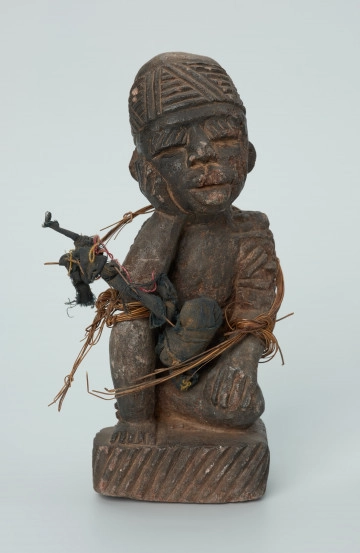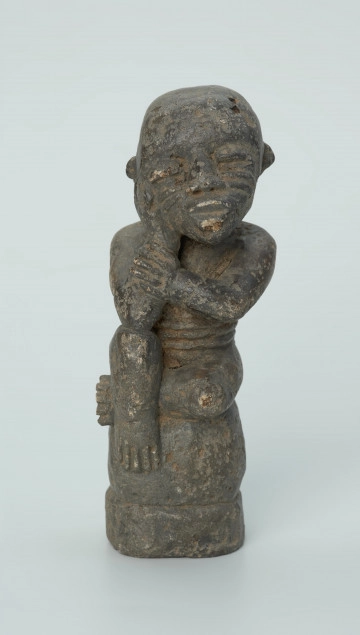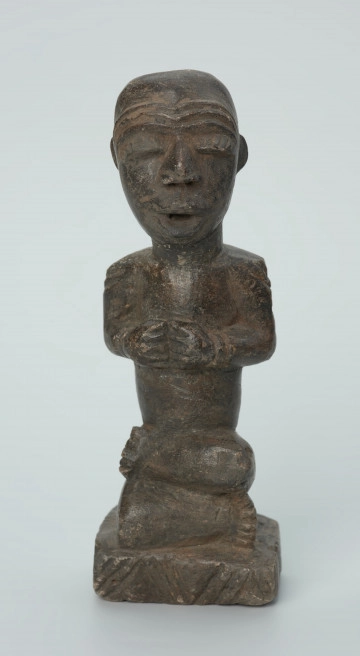
Ancestor worship figure
około 1901 — 2000
National Museum in Szczecin
Part of the collection: Mintadi figurines
The ntadi sculpture depicts fumani - a thinker, a chief pensive about the fate and happiness of his people. Stone in Africa is a relatively rarely used material for sculpture. Wood is more often used for this purpose. Mintadi figures are associated with the cult of ancestors and deceased heads of villages and families and carved in chlorite slate and steatite. Chlorite schist belongs to the soft rocks. It is composed of magnesium, flint and aluminium compounds. It occurs in white-grey and grey-brown colours. Steatite, known as tailor chalk, is also a soft microcrystalline rock with a high concentration of talc and a grey, pink or greenish colour. Both chlorite schist and soapstone are easily worked. Mintadi carvers use the tools for wood carving, namely a knife, a narrow-bladed blowpipe and an axe. Before they start carving the figures, they first select and level a suitable block of stone. Then they sketch the sculpture on it and start working. The artist first carves the head of ntadi. He shapes it very carefully and finishes it before moving on to the torso and limbs of the figure. It is because the head is considered by the Bakongo the seat of the human soul and thoughts. Mintadi figures are no more than 60 centimetres high.
Katarzyna Findlik-Gawron
Author / creator
Dimensions
cały obiekt: height: 17 cm, width: 7,5 cm
Object type
sculpture
Creation time / dating
Creation / finding place
Identification number
Location / status

unknown
około 1901 — 2000
National Museum in Szczecin

unknown
około 1901 — 2000
National Museum in Szczecin

unknown
około 1901 — 2000
National Museum in Szczecin
DISCOVER this TOPIC
National Museum in Lublin
DISCOVER this PATH
Educational path
0/500

We use cookies to make it easier for you to use our website and for statistical purposes. You can manage cookies by changing the settings of your web browser. More information in the Privacy Policy.
We use cookies to make it easier for you to use our website and for statistical purposes. You can manage cookies by changing the settings of your web browser. More information in the Privacy Policy.
Manage cookies:
This type of cookies is necessary for the website to function. You can change your browser settings to block them, but then the website will not work properly.
WYMAGANE
They are used to measure user engagement and generate statistics about the website to better understand how it is used. If you block this type of cookies, we will not be able to collect information about the use of the website and we will not be able to monitor its performance.